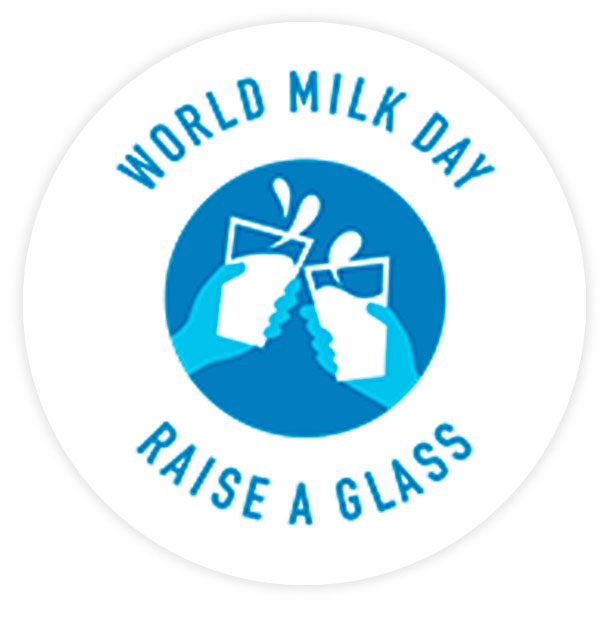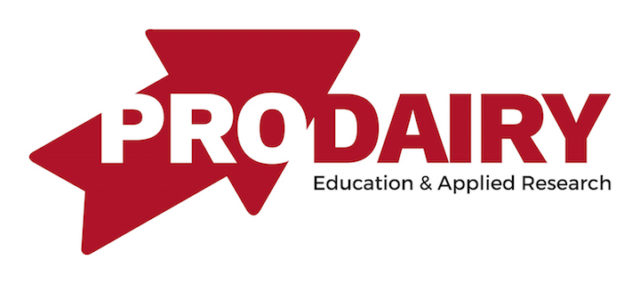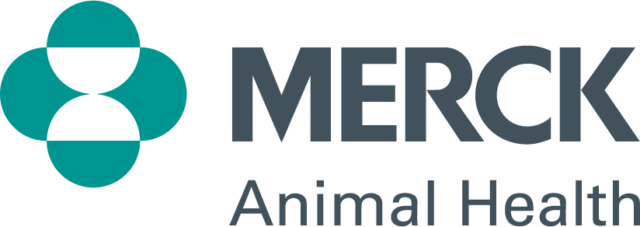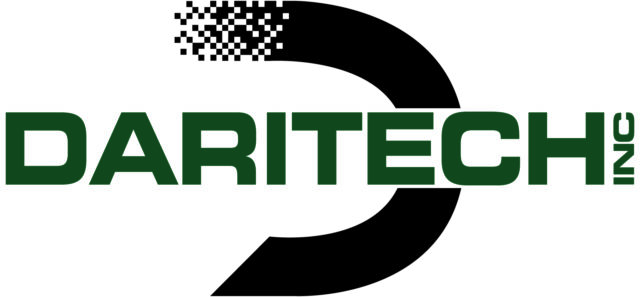Despite its diversity, dairy farmers and others involved in the dairy industry around the globe share similar challenges. On June 1, World Milk Day 2017 will strive to highlight dairy’s collective importance and create opportunities for growth.
The “World Milk Day: Raise a Glass” campaign will follow the sun – starting at sunrise in New Zealand and moving around the globe – to create a 24-hour wave of dairy promotion. Through the campaign, global industry leaders hope to spread the message that dairy can provide economic, social, nutritional and environmental solutions to the world’s problems.
Observed on June 1 since 2001, World Milk Day organizers have pledged support for an intensified three-year commitment designed to raise dairy awareness. The coordinated campaign will leverage a world of milk producers and members of the supply chain to tell the positive story of dairy. As of May 15, 52 World Milk Day events had been scheduled in more than 25 countries.
 The campaign is being coordinated through the Global Dairy Platform (GDP), an organization formed about 10 years ago to address the “pre-competitive” issues impacting dairy. Today, GDP brings together about 70 commercial companies and associations worldwide, and is chaired by Rick Smith, president and chief executive officer of Dairy Farmers of America (DFA).
The campaign is being coordinated through the Global Dairy Platform (GDP), an organization formed about 10 years ago to address the “pre-competitive” issues impacting dairy. Today, GDP brings together about 70 commercial companies and associations worldwide, and is chaired by Rick Smith, president and chief executive officer of Dairy Farmers of America (DFA).
Growth: Volume, value
With dairy consumption expected to continue to grow 2-3 percent in 2017, dairy remains a growth industry worldwide. Addressing DFA’s annual meeting earlier this spring, Jay Waldvogel, the cooperative’s vice president of global development, said raising awareness of the importance of dairy will capitalize on that growth and help develop new and larger dairy markets.
Globally, dairy consumers are diverse. In some areas struggling with economic, social and political turmoil, growth in volume remains a possibility. The biggest key in that market: raising awareness among new consumers who never had dairy or those who want more dairy for better nutrition.
In more mature markets, where per capita consumption may be reaching a cap and population growth has stalled, the greater growth potential relates to value.
“There is good potential for growth in dairy if you think in terms of value instead of volume,” Waldvogel said. “U.S. consumption isn’t going to grow 3-4 percent per year, but there is the opportunity to increase the value as people trade up for butter and from processed to natural or artisanal cheeses. People will buy a quality product, and there are opportunities to create value through innovation. That isn’t going to dramatically change the volume story.”
With U.S. milk production growing faster than demand, increasing dairy supply is a challenge facing U.S. producers that can only be addressed through the global market.
“What happens in the world affects the U.S. dairy industry,” Waldvogel told DFA members. “We need to be in the global market, and the good news is the global market is there and it is good. It’s not as far away and scary as it used to be.”
Due to changing technologies, animal care, debate over big versus small and a multitude of other issues, the story of dairy is complicated and often muddled, Waldvogel said. Telling the story of milk’s unparalleled positive impact in the world is one way to cut through those complications.
Waldvogel said dairy’s message seeks to focus on the industry’s upside. World Milk Day organizers are taking the message to the United Nation’s Food and Agricultural Organization, which released the disputed report, “Livestock’s Long Shadow,” in 2006. One of the report’s authors later admitted results of the study were flawed.
“What if we took the cows and went home? What if there was a world without milk? Without dairy, there would be a nutrition shortage,” he said.
That positive influence goes beyond nutrition.
Dairy is a bigger part of the social fabric than anyone realizes; a “1 billion person” community, starting with 133 million dairy farms averaging 3 cows per farm, Waldvogel said. From the farm to the consumer, the livelihoods of about 1 billion people depend on dairy throughout the supply chain. And, the industry meets the nutrition needs of 6 billion people.
“Do the math and the world understands dairy isn’t a bad actor, but an essential actor going forward. We are a solution for problems,” Waldvogel said.
Waldvogel said the dairy industry directly addresses seven of 17 United Nations’ “Sustainable Development Goals” adopted in 2015: reduce poverty; reduce hunger; improve health and well-being; encourage economic growth; reduce gender inequality; increase sustainability; and reduce negative impacts on the world’s climate.
“The world of milk is a pretty cool place, and there are ways to participate, leveraging what we have, to create opportunity,” Waldvogel said. “The (dairy) pie is still getting bigger. As soon as we stop growing, we start to fight over the pie. That’s when the knives come out, and nobody wins.”
Plan an event
While U.S. June Dairy Month activities are held throughout the month, Waldvogel urged dairy farmers and marketers to use June 1 to promote those activities.
From dairy producers and manufacturers to community groups and schools, anybody can host a World Milk Day event. And, an event can be almost anything, from a private party to symposium, and can be held almost anywhere (check for local permits and other regulations).
The 2017 theme seeks to celebrate dairy’s important contributions to health and nutrition, economic development, care for animals and environmental sustainability.
It will use social media tied to local events, connecting everyone from “mommy bloggers” concerned about nutrition and sports enthusiasts who like whey protein to dairy farmers offering farm visits to share their own personal stories.
Events can be registered at www.WorldMilkDay2017.com or contact milkday@emergingag.com. TINT, a social media aggregator, will be used to centralize all World Milk Day events, updated instantaneously across all social media platforms. Event information, including livestream video, recorded film or photos, can be shared by using #WorldMilkDay in Twitter, Facebook, YouTube, Pinterest and Instagram posts.
For more information and answers to frequently asked questions, visit the World Milk Day 2017 website. ![]()

-
Dave Natzke
- Editor
- Progressive Dairyman
- Email Dave Natzke




